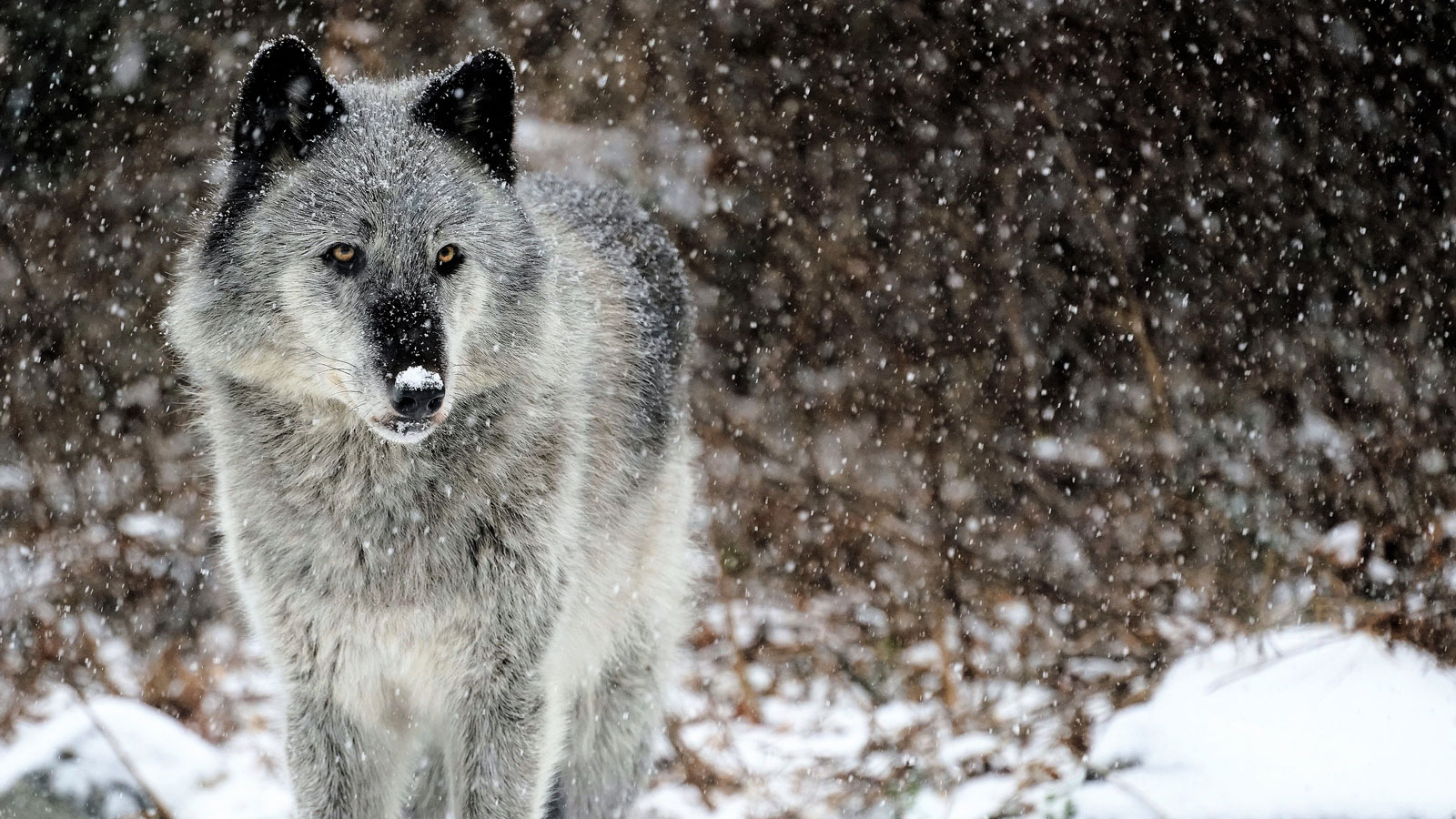Maggie Howell is the executive director of the Wolf Conservation Center.
Wolves are being slaughtered with a zeal that goes beyond the typical thrill of the hunt. Last month, Oregon state police asked for help and nonprofits offered a reward of nearly $50,000 for leads in identifying the criminals who poisoned two wolf packs, killing eight of these noble creatures in one of the slowest, most horrific ways possible.
Such slaughters have ramped up since the Trump administration removed the gray wolf from the endangered species list in October 2020. The change took effect in January 2021, leaving a patchwork of state regulations and wolf populations vulnerable not only to newly sanctioned hunting but to poaching, or illegal hunting, as well.
In Wisconsin, 218 wolves were killed in the span of three days last February, exceeding the state’s quota by nearly 100. The loss represents about a third of Wisconsin’s wolf population. In Washington, where wolves are still protected, a breeding mother wolf was poached in May. Since Montana’s wolf season opened on September 15, hunters have killed 195, including three members of the most viewed pack in the world.
Meanwhile, states like Montana and Idaho have green-lit baiting and trapping and allow hunters to use vehicles — like ATVs and helicopters — to chase down wolves. In Idaho, hunters can use packs of dogs and shoot wolf pups in their dens. To encourage wolf hunting, the state will even reimburse hunters for as much as $2,500 in costs for each wolf killed, essentially offering a bounty. Though these types of hunting practices are banned for certain species, state governments have perplexingly decided to allow them for wolf hunts — policies that swiftly followed Trump’s removal of wolf protections, all led by Republican legislatures.
Opposition to protecting wolves tends to come from ranchers and some hunters, who see the wolves as threats to livestock and game. As Idaho State Senator Van Burtenshaw put it, “There’s a wave of wolves coming in, and we just want to slow that wave down, minimize our costs, and bring back the ranching family.” But data show that wolves can easily coexist with cattle, sheep, and other animals. There are many options for non-lethal wolf management, like erecting flags around cattle pens to scare off wolves. And the reality is that wolves are not a major threat: Studies show they are responsible for just 1 percent of livestock deaths (dogs are responsible for more losses than wolves). Meanwhile, ethical hunters who understand ecology appreciate wolves because they make deer and elk populations stronger by selecting for weaker members of the herd.
Unfortunately, wolf management is no longer simply a debate among farmers, ranchers, and wildlife conservationists. Wolves have become politicized. After Montana Governor Greg Gianforte illegally slaughtered a wolf last spring, Vox reporter Benji Jones noted that “The wolf debate doesn’t seem to have much to do with science-based management. Instead, it comes down to how people view wolves … and how their politics inform those views.”
What’s driving hunters to kill as many wolves as possible in the most torturous ways possible is another facet of our bitterly divided country. Gianforte trapped and killed a banded wolf that had wandered across the border from Yellowstone Park — he was in violation of a licensing requirement but received only a warning letter. This fall, he expressed his frustration with the federal government reconsidering wolf protections, tweeting, “We don’t need Washington coming in” to manage wolves. U.S. Representative Liz Cheney complained about “Efforts from the radical environmentalist left to re-list the Gray Wolf.” Wolves seem to have become a focal point for those railing against big government, a symbol of coastal elitism encroaching on rural values. When I talk to hunters from my home office in Westchester, New York, they will offer a version of “how would you feel if we put wolves in Central Park?”
In the wilderness, however, wolves are what’s called a keystone species, meaning they have a disproportionately large impact on their entire ecosystem. It only takes a few of these apex predators to effectively manage populations of deer, elk, and bison, which in turn ensures a healthy level of vegetation to sustain smaller animals like beavers, songbirds, and fish.
Prior to the 1900s, roughly a quarter of a million wolves thrived throughout the lower 48 states. Without really understanding the ecological consequences, settlers nearly killed them all by the mid-20th century, reducing their range to a small portion of the Great Lakes region. Thankfully, with the Endangered Species Act of 1973, we began giving this animal opportunities to recover.
When wolves were reintroduced to Yellowstone National Park, scientists found they rejuvenated the landscape. Freed from predation for 70 years, the elk and bison populations had exploded. The aspen trees, willows, and cottonwoods were stripped bare, leaving nothing for the smaller animals, and the landscape degraded. Without the structure that trees and plants offered, the soil lost its integrity and riverbanks collapsed, redirecting waterways. Countless other animals vanished when the food they had depended on had been overgrazed. The return of the top predator kept those big herbivores moving, allowing habitats to rebound.
Each year, Yellowstone draws an estimated $35 million from people who visit specifically to see the wolves. Yet hunters have killed 23 during this winter’s hunting season; just 91 remain within the park.
The current anti-wolf frenzy is not based on economics, and it’s not based on science. It’s driven by something deeper and darker. Some of my peers have received anonymous emails with graphic photos of slaughtered wolves, and such pictures with celebratory comments are not uncommon on social media. Former director of the U.S. Fish and Wildlife Service Dan Ashe, who supported lifting wolf hunting restrictions but has since called on Interior Secretary Deb Haaland to authorize an emergency relisting, said, “What is happening in Idaho and Montana is not hunting. It is pure, unbridled cruelty.”
There was no valid scientific reason for delisting the gray wolf in the first place; it was purely a political move to mobilize Trump’s base days before the 2020 election. Biden can easily reverse this by emergency order. We don’t even need to wait for the year-long review being undertaken by U.S. Fish & Wildlife — the inhumane trophy hunting can be temporarily halted tomorrow.
The larger challenge will be helping people see the wolf as an ecosystem guardian rather than a fairytale villian. If people feel that the government is encroaching on their freedom, taking out anger on our country’s majestic animals won’t solve it.
The views expressed here reflect those of the author.
Fix is committed to publishing a diversity of voices, and we want to hear from you. Got a bold idea, fresh perspective, or insightful news analysis? Send a draft, along with a note about who you are, to opinions@grist.org.



